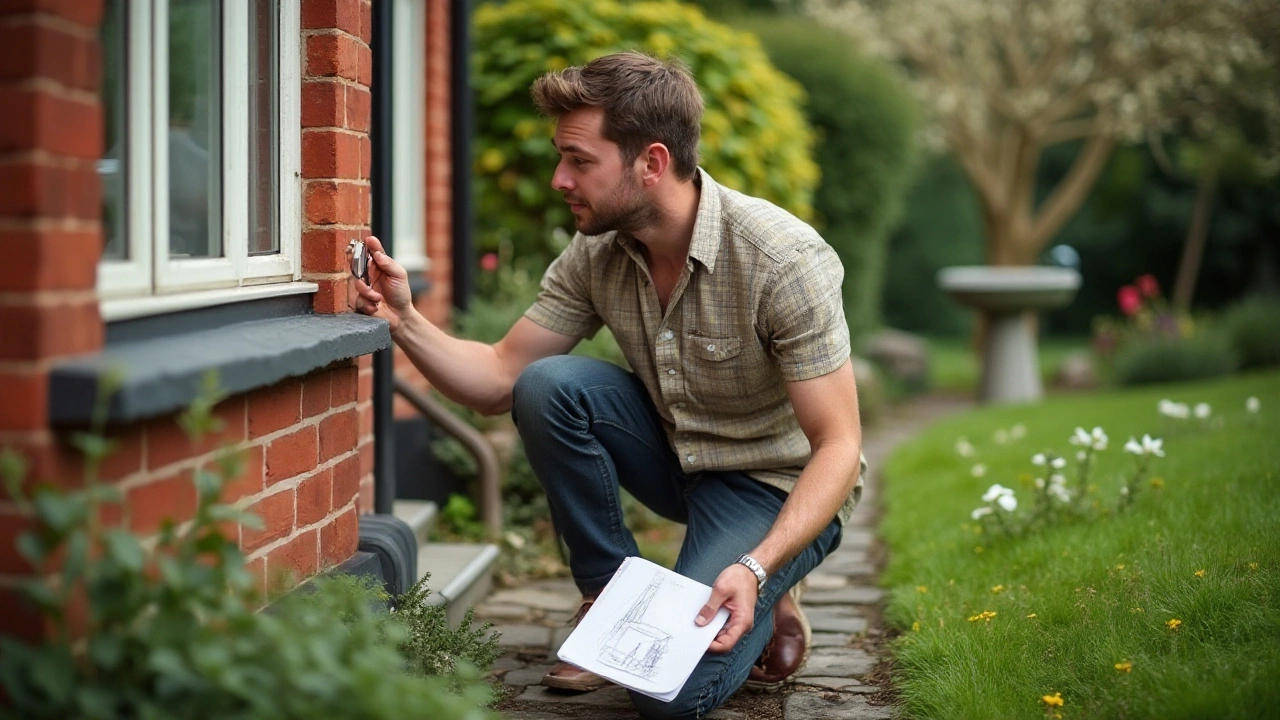DIY Foundation: Real‑World Tips for Homeowners
When your house starts shifting or you see new cracks in the walls, the foundation is the first thing to check. Fixing a foundation isn’t always a job for a big crew – many small problems can be tackled by a handy homeowner. In this guide we’ll show you how to spot the warning signs, what simple repairs you can do yourself, and when it’s smarter to call in a pro.
Spotting Common Foundation Problems
First off, learn the tell‑tale signs. Horizontal cracks in a foundation wall, doors that stick, and uneven floors are the usual suspects. A crack that’s wider than a quarter‑inch or that’s growing each rainstorm usually means the soil is moving and you need a more serious fix. Look for water pooling near the base of the house – that can turn a small crack into a big mess fast.
Another red flag is a sagging porch or a cracked chimney. These aren’t just cosmetic issues; they often point to shifting footings. If you live in an area with heavy clay soil, expect more movement in wet seasons. Keep a photo journal of any new cracks so you can show a contractor exactly what’s changing over time.
Simple DIY Fixes and When to Call a Pro
For tiny hairline cracks, a quick epoxy injection does the trick. Clean the crack, pour the epoxy, and let it cure – you’ll have a seal that holds water out and stops the crack from widening. For a few centimeters of cracked concrete, a concrete patch mix works fine. Just follow the package directions, press the mix deep into the crack, and smooth the surface.
If you notice a small gap under the slab, you can use a polymer‑based sealant. It expands a little as it cures, filling the void and preventing soil from getting behind the slab. The key is to work when the weather is dry, otherwise the sealant won’t stick well.
When the problem includes large horizontal cracks, significant settling, or water seeping in constantly, it’s time to bring in a foundation specialist. They’ll assess whether you need piering, underpinning, or a full wall replacement – solutions that can cost a few thousand to tens of thousands of pounds. Knowing the cost range helps you budget and avoid surprise bills.
Before you decide, get at least three quotes and ask each contractor to explain why they recommend a particular method. A reputable pro will show you a clear plan, explain the timeline, and outline any warranty they offer. This transparency saves you from hidden fees later.
Bottom line: a lot of foundation nuisances can be handled with a bit of elbow grease and the right materials. Keep an eye on cracks, act quickly, and don’t hesitate to hand over the heavy lifting when the issue looks like more than a weekend project. Your home’s stability is worth the effort, and with the right approach you’ll save both time and money.

DIY Foundation Repair: Step-by-Step Guide for Homeowners
Dec 14, 2024, Posted by Damon Blackwood
Foundation issues can threaten any home's structural integrity, but with the right approach, many can be addressed without professional help. This article provides a comprehensive guide to diagnosing common foundation problems and offers practical DIY solutions to fix them. From identifying signs of trouble to completing repairs safely and effectively, homeowners can take control of maintenance tasks. With the right tools and techniques, addressing foundation concerns can become a manageable part of home upkeep.
MORESEARCH HERE
Categories
TAGS
- foundation repair
- commercial construction
- construction
- new builds
- home improvement
- home renovation
- bathroom renovation
- residential construction
- construction materials
- home foundation
- renovation tips
- building types
- contractor
- foundation cracks
- home construction
- architectural services
- building codes
- construction differences
- home inspection
- kitchen installation